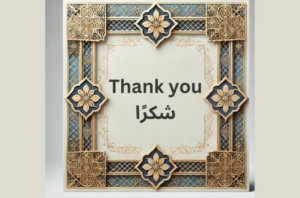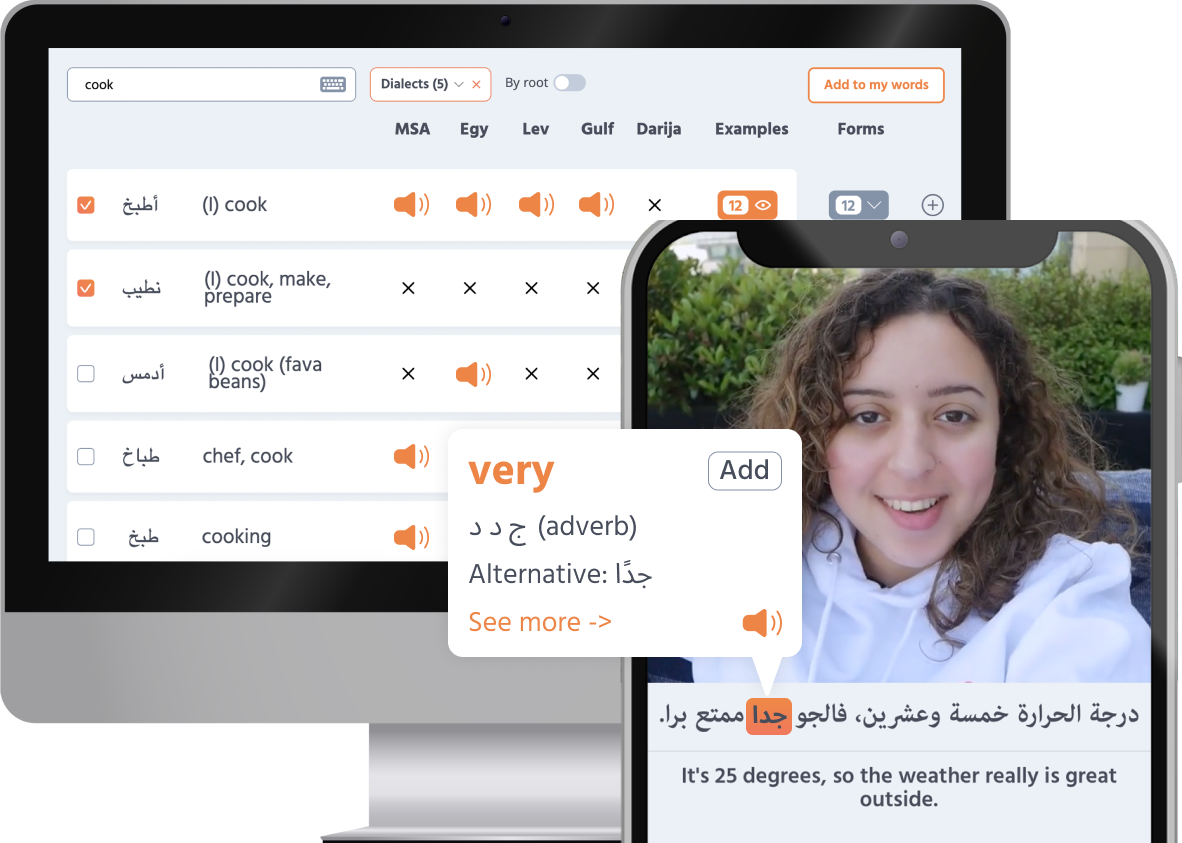Within the Muslim calendar, there are two standout festivals: Eid al-Fitr and Eid al-Adha . These celebrations follow the lunar Islamic calendar, meaning their dates shift within the Gregorian calendar each year.
Today, let’s explore Eid al-Fitr. What is it exactly, and when does it happen? Join us as we uncover the essence and joy of this festival.
What is Eid al-Fitr ? Eid al-Fitr عِيْد الفِطْرِ
is a combination of two words in Arabic.
Eid (عِيْد)
: An Arabic word meaning “festival,” “celebration,” or “holiday.” It is commonly associated with significant religious events in Islam.
Fitr (الفِطْرِ)
: This word refers to “breaking” or “conclusion,” often used in the context of breaking a fast. It signifies the end of fasting, particularly the fasting month of Ramadan .
The term عِيْد الفِطْرِ
“Eid al-Fitr” therefore translates to the “Festival of Breaking the Fast,” marking the conclusion of the fasting period. During Eid al-Fitr, Muslims celebrate the completion of a month of fasting, prayer, reflection, and community. It’s a time of joy, feasting, and thanksgiving to God for the strength given to complete the fast, as well as a period for increased charity and community bonding.
It is also referred to in some countries as the “Minor Eid” or “Small Eid” العيد الصَّغير
because it lasts 3 days, while Eid al-Adha lasts 4 days.
Dates, Eid decorations, the Quran, and prayer beads. When is Eid al-Fitr? Since Muslims follow the Hijri calendar, Eid’s timing is determined by the sighting of the Shawwal crescent moon 🌙. This means that the Eid date can usually be confirmed only a day or two before the actual celebration.
While astronomical calculations can provide approximate or even certain dates for Eid al-Fitr, it’s crucial for Muslims to visually confirm the sighting of the moon to officially declare and confirm Eid. Astronomical data alone isn’t sufficient to ascertain the Eid date in cases where the moon isn’t sighted 👁️.
According to Islamic law, experts from authorized religious bodies search for the Ramadan crescent moon after sunset on the 29th day of Ramadan. If sighted, the following day marks the beginning of the new month, which is Shawwal in this case. If not sighted, the following day completes the month of Ramadan.
There is no specific place to sight the Eid crescent; it can be observed from any location with a clear view of the sky. The most important thing is the ability to see the western horizon after sunset, where the crescent usually appears. Some prefer elevated places or areas away from light pollution to facilitate the sighting of the crescent. The observation is carried out through the following steps:
Find the right time: They use astronomy to predict when the moon can be seen after sunset for Eid or before sunrise for Ramadan.Pick a spot: They choose a place with a clear view of the west horizon for Eid or east for Ramadan to see the moon.Use tools: Sometimes, they use telescopes or binoculars to see the moon better.Group observation: Often, people gather together to try and see the moon.Announce the sighting: Once the moon is seen, mosques or Islamic organizations announce it, and it gets shared in the media or online.
In non-Islamic countries, the task of sighting the Eid crescent moon is usually undertaken by Muslim communities and organizations.
If the moon is hard to see due to weather or location, Islamic communities in non-Islamic countries might rely on announcements from major Islamic countries to know when Ramadan or Eid starts.
Crescent moon. Eid al-Fitr Islamic traditions The celebrations of Eid al-Fitr vary from one country to another, but there are common customs recommended in Islam for celebrating this occasion:
Wearing new and beautiful clothes Muslims buy new clothes for Eid, especially for children. Some adults may opt for clean, elegant clothes, even if not brand new.
Adornment and grooming Applying fragrant perfumes, grooming, and presenting oneself with the best appearance.
Eating dates Muslims usually consume an odd number of dates in the morning before heading to the Eid prayer on the first day of Eid al-Fitr, and they do the same for breaking their fast (iftar) in Ramadan.
Takbir and Eid prayer Muslims perform Takbir (chanting praises to Allah)(الله أكبر الله أكبر لا إله إلا الله الله أكبر الله أكبر ولله الحمد)
in mosques upon sighting the Shawwal crescent moon. They gather (men, women, and kids) the next morning, the first day of Eid, for Eid prayers in mosques and designated prayer areas.
Eid prayer is considered a community obligation (Fard Kifaya), meaning if some Muslims in a community perform it, the duty falls off the rest. Some say it is Sunnah, meaning recommended, while others view it as an individual obligation (Fard ‘Ayn), meaning obligation for all Muslims. Like other prayers, it consists of two units (rak’ahs), but it includes an additional six or seven Takbirs after the opening Takbir (Takbirat al-Ihram).
Eid prayer. Visiting relatives and enjoying time People visit each other, especially relatives, on Eid. Family members gather at one of their homes and share meals. They celebrate these three days by going out with their families to beautiful places, and spending enjoyable and memorable times together, whether in nature or parks with children’s play areas or other venues.
A Muslim family enjoying Eid al-Fitr outdoors in nature. Zakat al-Fitr Zakat al-Fitr is a strongly recommended (واجِب)
charity for Muslims given at the end of the month of Ramadan, before the Eid al-Fitr prayer. It is obligatory for every Muslim who possesses wealth enough to cover themselves and their family’s expenses for the day of Eid, whether in the form of staple food such as wheat, barley, dates, or the equivalent monetary value that can be used to purchase food.
These are the common celebratory aspects shared among Muslims in all countries.
Other traditions during Eid al-Fitr In addition to the Islamic customs of celebrating Eid al-Fitr, other common festive practices vary from one country to another. Here are some of these practices observed in some Arab and Islamic countries :
Visiting graves The tradition of visiting graves is prevalent in Arab countries. People visit the graves of their departed loved ones, particularly after the Eid prayer. This practice is also observed by Muslims in China.
Although this practice is discouraged in Islam, because Eid is meant to be a time of joy, and visiting graves can evoke feelings of sadness and bitterness. Despite this, it remains a common tradition in most Arab countries, where people often bring flowers or green branches to decorate the graves.
Eidiyah
(Eid gifts) Eidiyah generally refers to a monetary gift given to children on Eid to bring them joy. In some countries, women may also receive Eidiyah from their husbands. Eidiyah can also be given in the form of gifts or toys instead of money, depending on the region. It is a widespread practice across all Arab and Islamic countries, with colorful envelopes used for giving money in Indonesia.
Eid al-Fitr gift boxes. Exchanging greetings People visit each other and exchange greetings for Eid, or they send text messages if they are in distant places to wish each other well. Common greetings and their responses include:
In MSA :
These greetings are in Standard Arabic, but they are common in all Arab countries, though the pronunciation may vary slightly depending on the dialect.
عيد مبارك
(Blessed Eid):
Response: عيد مبارك علينا وعليكم
(Blessed Eid to us and you).
عيد سعيد
(Happy Eid):
Response: عيد سعيد علينا وعليكم
(Happy Eid to us and you).
كل عام وأنتم بخير
(May you be well every year!):
Response: وأنتم بخير
(And you be well).
In the Levant :
كلّ عام وإنتوا بخير
(May you be well every year! )
Response: وإنتوا بخير
(And you too / Same to you)
Or:
كلّ عام وإنتو بألف خير
(May you be a thousand times well every year!
Response: وإنتو بألف خير
(And you too—a thousand times well!)
You can also say:
ينعاد عليكم بالخير والصحّة والعافية
(May it return to you with goodness, health, and wellness):
Response: وعليكم بالخير والصحّة والعافية يارب
(And to you with goodness, health, and wellness, God willing)
And it’s common to combine both greetings, for example:
كلّ عام وإنتوا بخير، ينعاد عليكو بالخير والصحة والعافية
(May you be well every year—may it return to you with goodness, health, and wellness):
Response: وإنتوا بخير، وعليكوا بالخير والصحّة والعافية يارب
In Egypt:
كل سنة وانتوا طيّبين
(Every year and you are well):
Response: وأنتوا طيّبين
(And you be well)
In the Gulf :
عساكم من عوَّاده
(May you be among those who celebrate it again):
Response: ينعاد عليكم بالخير والصحّة والعافية
(May it return to you with goodness, health, and wellness)
In the Maghreb:
مبروك العيد
(Blessed Eid):
Response: الله يبارك فيك
(May Allah bless you)
These greetings reflect the joy and warmth of the Eid celebrations, fostering a sense of community and well-wishing among Muslims worldwide.
With the advent of Photoshop, a tradition emerged of exchanging pre-designed images or videos adorned with roses and greeting messages, a practice that persists today, seemingly unaffected by the technological revolution. These images, once received, are often forwarded to all contacts on WhatsApp in a chain-like fashion, reminiscent of a digital form of money laundering. It’s common to circulate these greetings from one side of the family to the other, say from your father’s side to your mother’s side and back. Interestingly, these images and videos are so familiar that one can respond to them without the need to download them, as they have become as recognizable as the back of one’s hand. like this one below.
Eid sweets Women typically start preparing Eid sweets in the last week of Ramadan, with Muslims of all backgrounds participating. The types of sweets vary from one country to another.
Eid sweets For example, Iraq and Saudi Arabia are known for الكليجة
(Kleija) which are hollow biscuits filled with dates, honey, sugar, or date syrup. Egypt is famous for الكحك
(Kahk) a circular biscuit, and الغريبة
(Ghareeba) is a traditional Arab sweet made from ghee, sugar, and flour and is served in Libya, Tunisia, Morocco, the Levant, Algeria, Egypt, and Iraq-. In the Levant, المعمول
(Maamoul) is served, a type of filled cookie with dates, pistachios, walnuts, or coconut.
In the Maghreb, مَقْرُوض
(Makroud) is popular, made from semolina dough stuffed with dates.
In Yemen, بنت الصحن
(Bint al-Sahn) is the most famous dessert associated with celebrations and occasions in general. It is a round cake made of layers of dough prepared from flour, water, butter, and eggs with a little sugar, sweetened with honey.
Indonesia is known for a cake called “Kue Lapis” (Spekkoek), which is a type of Indonesian layer cake made from flour and butter or vegetable shortening.
In Turkey, Eid al-Fitr is also known as “Şeker Bayramı,” which translates to “Sugar Festival.” Turkey is famous for “baklava,” a sweet pastry, and “kadayıf”.
These sweets are usually served with coffee or tea, depending on the customs of each country. and the dates are served too in al-eid. Despite fasting during the day, people often gain weight during Ramadan due to all the sweets!
Eid clothing Some Muslims wear traditional attire from their countries on Eid, such as those in the Maghreb, Malaysia, the Gulf, and Turkey. In the Levant, some wear new clothes of any style, regardless of whether they are traditional or not.
Feasts These are prepared on the day of Eid, varying from one country to another, where family members gather to enjoy lunch together and savor delicious dishes.
“Mahshi” (stuffed grape leaves, stuffed zucchini) In Iraq and Syria, “Mahshi” محشي
(stuffed vegetables) is prepared, while in Jordan, “Mansaf”منسف
is a popular choice. In Egypt, most people enjoy “Feseekh” فسيخ
, a type of salted fish. In the Maghreb countries, most people prepare “Couscous” كسكس
or “Bastilla” بسطيلا
along with “Tagine with Apricots” طاجن بالمشمش
. In Palestine, “Sumaqiyya” سماقية
and “Feseekh”فسيخ
are commonly consumed.
Couscous In Sudan, neighbors often share a meal in the street, maintaining the Ramadan atmosphere, where each family brings a tray of food containing “Aseeda”
, as a staple, along with fried fish and other delicacies. Some families prefer to have the Eid breakfast at the home of an important family member or relative, laden with various types of sweets prepared by women.
Henna Women decorate their hands and feet with henna
in the Gulf countries, India, Pakistan, and also in the Maghreb countries.
حَق الملح
(Salt price) “Salt price” or “Takbirah” as some call it, is a Moroccan tradition that embodies recognition and appreciation for the sacrifices made by women during the month of Ramadan. Men in the family present gifts to them either at the end of the holy month or on the morning of Eid as a token of gratitude. This custom is prevalent in various countries in the Arab Maghreb region. It entails honoring women on the morning of Eid by placing a certain amount of money or a gold ring in an empty cup of coffee prepared by their wives.
Children’s activities The greatest joy of Eid for children comes after they put on their new clothes and receive their Eid gifts. They accompany their families to parks and amusement parks to enjoy playing with their friends and relatives.
Decoration of homes and streets In most Arab and Islamic countries, houses and streets are adorned with lights and balloons to celebrate the arrival of Eid. ✨
Open house In Malaysia, Eid al-Fitr goes by the name of “Hari Raya”. A significant aspect of the festivities involves a heartwarming tradition known as the “open house”. Regardless of whether you live in a grand palace or a humble abode, it’s customary for Muslims to arrange a buffet and open their doors to neighbors, inviting them to partake in the feast. Malaysia boasts a diverse society, and Eid serves as a unifying celebration where people of various faiths and cultures gather to rejoice and share meals.
Oh, and by the way… If learning Arabic at your own pace, with fun, real-world videos sounds like your style, then Playaling could be exactly what you’re looking for!
With Playaling, you’ll dive into any major Arabic dialect or MSA. Our diverse range of videos has it all—from everyday conversations and cultural moments to music videos, TV and movie clips, influencer content, news broadcasts, and inspiring talks.
Our interactive captions let you tap any word for instant translations, context, and audio. So, real Arabic content becomes accessible with just a click. Miss something? No problem—rewind and listen as often as you need, or hover over subtitles for quick definitions.
Spot a word you want to learn? Save it to your personalized word set, or dive into curated sets for focused practice and easy review.
Interactive exercises let you dive in and practice what you’ve learned.
Need to look something up? The Audio Dictionary has you covered with clear human pronunciations and real world examples.
It’s a learning experience that keeps you engaged, bringing authentic, real-world Arabic closer to you every step of the way.
Give it a try!









